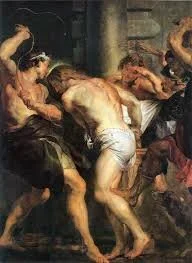Transactional evil flows from evildoer to victim. The flow is visible. For example, on the road from the Crucifixion to the Resurrection, we tortured and killed Jesus. He suffered and died. There are other kinds of evil. But, transactional evil was the only kind of evil that Jesus put on display on the road from the Crucifixion to the Resurrection.
Transactional evil is not quite the same as intrinsic evil. For intrinsic evil, the flow of evil is not always visible. The difficulty in detecting a flow of evil in intrinsic evil is the reason philosphers and theologians invented the concept of intrinsic evil. There wasn't enough evil in the world so they invented more. The fiction of intrinsic evil gives them a wide, unfettered latitude to declare evil anything that they dislike.
The mission of Jesus was to show us the best way to handle transactional evil in the Valley of Tears. Jesus's recommendation is that we quarantine transactional evil with love.
When we worry too much about intrinsic evil, however, we take our eyes off the mission of quarantining transactional evil with love - we stop doing the job that needs to be done.






What is the effect on love? Does conduct have a positive effect on love or a neutral effect or a negative effect?